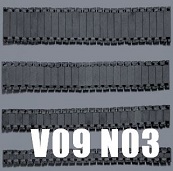Abstract
This article deals with a didactic experiment in the teaching of Topography for students of Architecture and Urbanism using Active Learning strategies. It´s intention is to contribute to the knowledge that can generate improvements to teaching focused on innovation. The objective of the research was to analyze the use of different teaching models, such as Project-Based Learning (PjBL), Problem-Based Learning (PBL), Inverted Classroom, Peer Learning, among others, forming a technical panorama and trends that promote. With the application of these models, we aimed to identify the balance between times and demands of actions in education to promote improvements and effective learning. The methodology adopted was the redesign of the subject with a teaching plan that ensures strategies for active learning, directed to the application and to results obtain. Observed, mapped, and analyzed during a semester, the discipline was to verify the proposal. This practice allows divulging positive aspects, improvement aspects, and suggestions for improvement actions in the teaching area, applying different modalities for active learning. It has a focus on meaningful learning in higher cognitive dimensions of concepts, technical procedures, simulation, and terrain modeling in the design concept, without prejudicing the general role of this discipline in the foundation of topography.
References
ARQUITETURA. Matriz Curricular do curso de arquitetura e urbanismo. PUCPR, 2016.
BEHRENS, M. A. O paradigma emergente e a prática pedagógica. 5. ed. Petrópolis: Vozes. 2011.
BELBIN. The Nine Belbin Team Roles. Disponível em: http://www.belbin.com/about/belbin-team-roles/. Acesso em: fev. 2017.
BOLLELA, V.; SENGER, M. H.; TOURINHO, F. S.; AMARAL, E. Aprendizagem baseada em equipes: da teoria à prática. Medicina (Ribeirão Preto. Online), v. 47, n. 3, p. 293-300, 3 nov. 2014. doi:https://doi.org/10.11606/issn.2176-7262.v47i3p293-300
BROCKBANK, A., MCGILL, I., BEECH, N. Reflective Learning in Pratice. 2002. Disponível em: https://books.google.com.br/books?id=QEy--3zRO1cC&redir_esc=y. Acesso em 14 dez. 2015.
CREARE. Oficinas de Metodologias Ativa. Curso de Formação Docente. Curitiba: PUCPR, 2015.
Disponível em: http://www.formacaodocentepucpr.com.br/. Acesso em: 14 dez. 2015.
FELDER, R. M.; BRENT, R. Active learning: an introduction. ASQ Higher Education Brief. 2009. Disponível em: http://www4.ncsu.edu/unity/lockers/users/f/felder/public/Papers/ALpaper(ASQ).pdf. Acesso em: 14 dez. 2015.
GAUTHIER, C. et al. Por uma teoria da pedagogia: pesquisas contemporâneas sobre o saber docente. Ijuí: Edit. Unijuí, 2006.
HAMDAN, N. et al. A review of flipped learning. 2013. Disponível em: http://researchnetwork.pearson.com/wp-content/uploads/LitReview_2014_FlippedLearning_vFinal_JK_WEB.pdf. Acesso em: 14 dez. 2015.
JUSTICE, C. et al. Inquiry-based learning in higher education: administrators’ perspectives on integrating inquiry pedagogy into the curriculum. 2009. Disponível em: http://www.mohe.gov.my/portal/images/utama/doc/artikel/2011/10-13/inquiry_based_learning_in_higher_edu.pdf. Acesso em: dez. 2015.
KOPP, V. et al. Self-Regulated Learning with Case-Based Worked Examples: Effects of Errors. Evaluation & Research in Education, v. 22, n. 2-4, p. 107-119. 2009. doi:https://doi.org/10.1080/09500790903494518
LANKSHEAR, C.; KNOBEL, M. Pesquisa pedagógica: do projeto à implementação. Porto Alegre: Artmed, 2008.
LAWSON, B. Como arquitetos e designers pensam. Tradução Maria Beatriz Medina. São Paulo: Oficina de Textos. 2011.
LOU S. J; CHUNG C. C.; DZAN W.Y.; SHIH R. C. Construction of a Creative Instructional Design Model Using Blended, Project-Based Learning for College Students. Creative Education, v. 3, n. 7, p. 1281-1290. 2012. doi:http://dx.doi.org/10.4236/ce.2012.37187.
MAZIERO, L. T. P. Diário de Bordo das aulas realizadas em um Projeto Piloto. Curitiba: PUCPR, 2017.
MAZUR, E. Peer Instruction: Getting Students to Think in Class. 1997. Disponível em: http://mazur.harvard.edu/sentFiles/Mazur_274537.pdf. Acesso em: 14 dez. 2015.
MENTIMETER. Interactive presentation software. Disponível em: https://www.mentimeter.com/ Acesso em: 10 fev. 2017
MITRE, S. M. et al. Metodologias ativas de ensino-aprendizagem na formação profissional em saúde: debates atuais. Ciência e Saúde Coletiva, Rio de Janeiro, v. 13. 2008. Disponível em: http://www.scielo.br/scielo.php?script=sci_arttext&pid=S1413-81232008000900018. Acesso em: 14 dez. 2015.
PANITZ, T. Collaborative versus Cooperative Learning: A Comparison of the Two Concepts Which Will Help to Understand the Underlying Nature of Interactive Learning. ERIC Collection. 2009. Disponível em: http://files.eric.ed.gov/fulltext/ED448443.pdf. Acesso em: 14 dez. 2015.
PIÑÓN, H. Teoria do projeto. Porto Alegre: Livraria do Arquiteto, 2006. 227 p.
SCALLON, G. Avaliação da aprendizagem em uma abordagem por competências. Curitiba: PUCPress, 2015. 445 p.
SPRICIGO, B. C.; MANFFRA, F. E.; SAROYAN, A. A course design workshop as a possible path from a content-centered to a learning-centered teaching. Revista Diálogo Educacional. Curitiba, v. 17, n. 52, p. 337-355, abr./jun. 2017 PUCPR. doi: http://dx.doi.org/10.7213/1981-416X.17.052.DS02.
TARDIF, M.; LESSARD, C. O trabalho docente: elementos para uma teoria da docência como profissão de interações humanas. 6ª Ed. Rio de Janeiro: Vozes, 2011.
I accept that PARC Research in Architecture and Building Construction journal perform, on the original file approved for publication, revisions and modifications in orthoghaphic, grammar and standard issues.
I give to PARC Research in Architecture and Building Construction journal the rights of first publication of the revised version of my paper, licensed under the 'Creative Commons Attribution' license (which allows sharing the work with the recognition of first authorship and publication in this journal).

